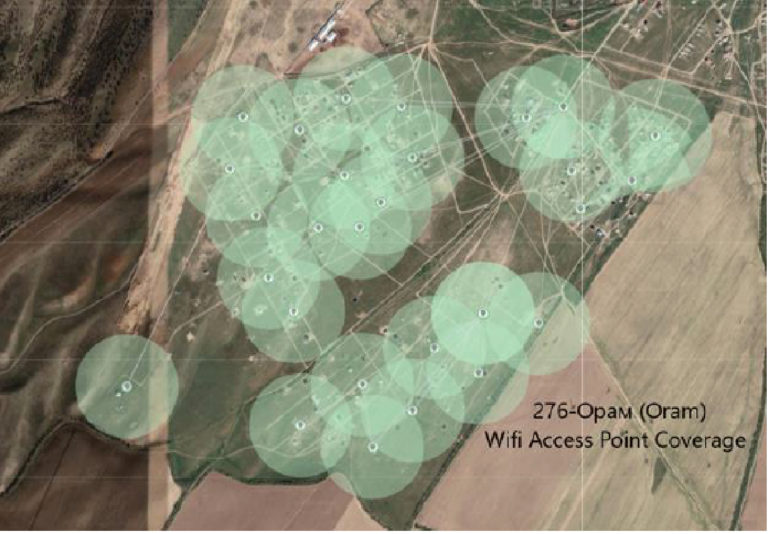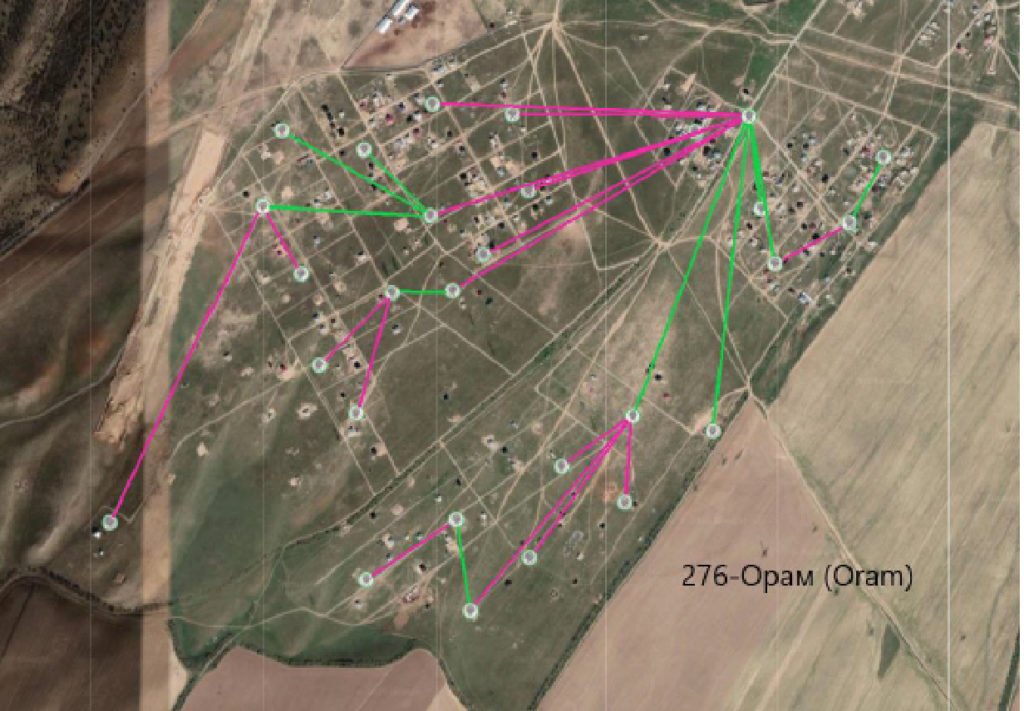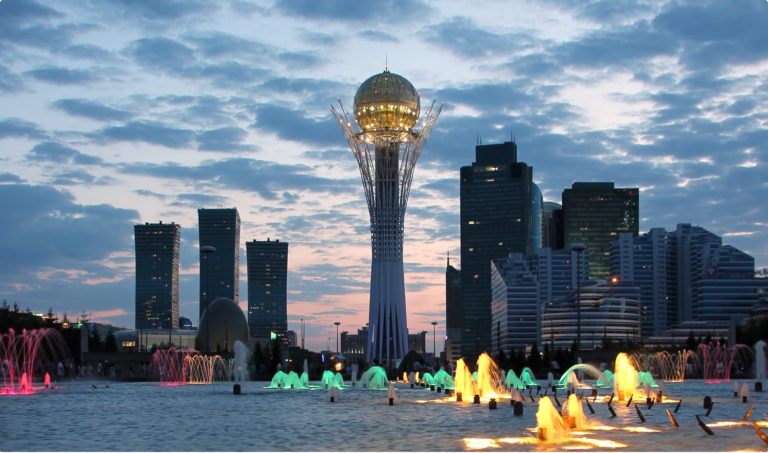This deployment plan’s purpose is to illustrate the use case dynamics for ARRA Networks technology in providing low cost, plug and play last mile infrastructure to the 4,500 towns waiting for broadband.
Of the 4,500 towns in the nearly completed fiber project, Oram is used as the reference deployment example due to the geography, population and home density which is similar to the rest of the currently unconnected towns in the project. These same deployment metrics can be applied to all 4,500 towns with little to no modification.
Site: 276-Орам (Oram), Kazakhstan
The total number of households in this village is estimated to be 300 covering an area of 2.49 sq km.
The coverage map above shows a possible deployment using ARRA mesh routers. The light green areas show broadband WiFi coverage. A conservative radius of 200m per router is shown. This was used instead of the 300m max to insure maximum reliability and connectivity of the network.
The above mesh map shows the router to router links for the example deployment. The green lines are connections for radio2 and the pink lines are connections made with radio1. Max link distance shown is only 1km.
Links were made with the following criteria:
- The routers were placed at a height of 2m (6.5ft) to 3m (9.8ft). Better performance may be realized with the router mounted higher if desired. The Low mounting height was used to illustrate the ease of installation. No costly towers need to be installed.
- The mesh network will get its backhaul source from the fiber projects tower in this town. It is placed at a height of 4m (13ft) but higher would be better for RF propagation.
- Links were optimized with the terrain features, but can be in almost any location.
Estimated Performance
Estimated performance of this network with a contention of 5 is up to 60Mbps of service at each node with a backhaul speed of 520Mbps. The total number of routers needed is 28.
Routers may easily be added to cover potential low performance or blind areas such as the roads near the center of Fig 1. This was not included in this example, but new nodes can be added without configuration as desired. The autonomous mesh network self-configures and complies with all the rules of the area when a new router is in range.
Actual performance may vary due several factors such as vegetation, RF congestion, buildings, and type of connected equipment.







